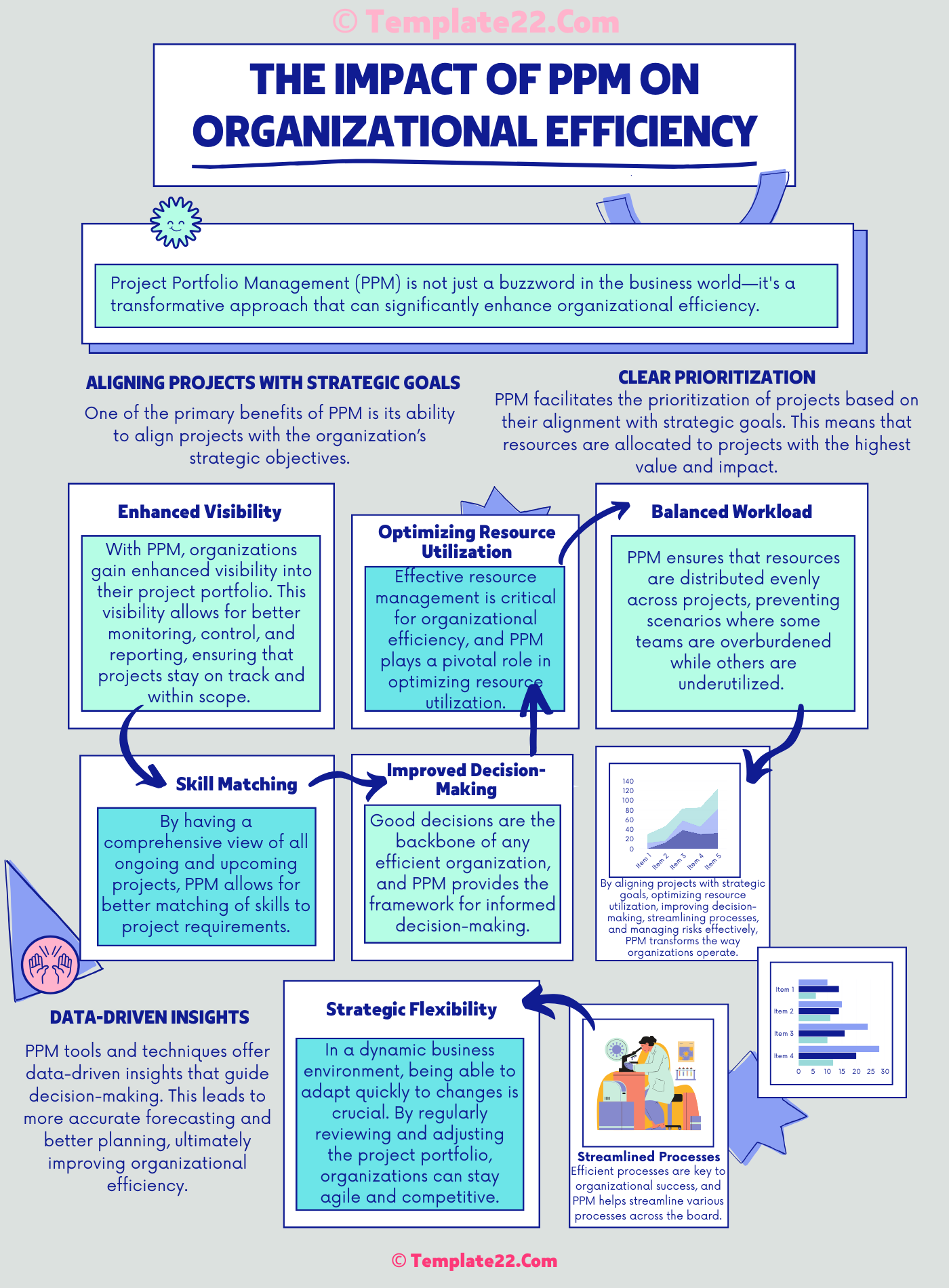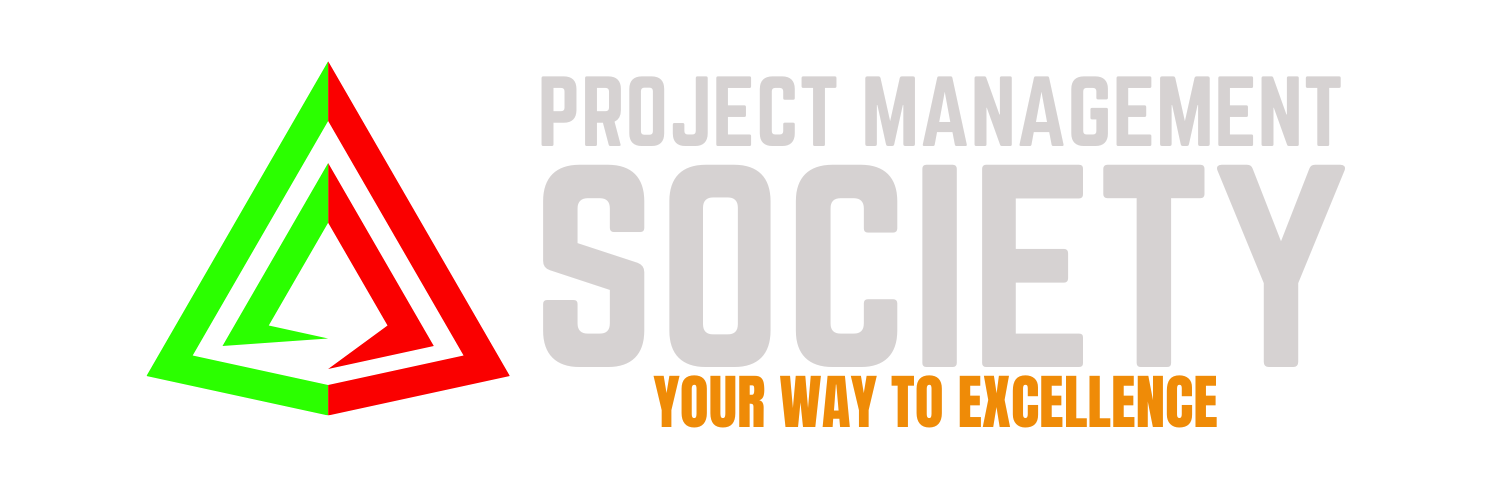 Project Portfolio Management (PPM) is not just a buzzword in the business world—it’s a transformative approach that can significantly enhance organizational efficiency. The Impact of PPM on Organizational Efficiency is profound. By overseeing and managing a portfolio collection of projects and programs, organizations can align their efforts with strategic goals, optimize resource utilization, and ensure better decision-making. But how exactly does PPM drive efficiency in an organization? Let’s dive in.
Project Portfolio Management (PPM) is not just a buzzword in the business world—it’s a transformative approach that can significantly enhance organizational efficiency. The Impact of PPM on Organizational Efficiency is profound. By overseeing and managing a portfolio collection of projects and programs, organizations can align their efforts with strategic goals, optimize resource utilization, and ensure better decision-making. But how exactly does PPM drive efficiency in an organization? Let’s dive in.
Aligning Projects with Strategic Goals
One of the primary benefits of PPM is its ability to align projects with the organization’s strategic objectives. Instead of working on isolated projects that may or may not contribute to the overall mission, PPM ensures that every project supports the organization’s broader goals.
Clear Prioritization
PPM facilitates the prioritization of projects based on their alignment with strategic goals. This means that resources are allocated to projects with the highest value and impact. By focusing on what truly matters, organizations can avoid the pitfalls of working on low-priority projects that drain resources without delivering significant benefits.
Enhanced Visibility
With PPM, organizations gain enhanced visibility into their project portfolio. This visibility allows for better monitoring, control, and reporting, ensuring that projects stay on track and within scope. It also helps identify potential risks and bottlenecks early, enabling proactive management and timely interventions.
Optimizing Resource Utilization
Effective resource management is critical for organizational efficiency, and PPM plays a pivotal role in optimizing resource utilization.
CLICK HERE TO DOWNLOAD 300+ PROJECT MANAGEMENT TEMPLATES & DOCUMENTS IN EXCEL
Balanced Workload
PPM ensures that resources are distributed evenly across projects, preventing scenarios where some teams are overburdened while others are underutilized. This balanced workload helps maintain employee morale and productivity, reducing burnout and turnover.
Skill Matching
By having a comprehensive view of all ongoing and upcoming projects, PPM allows for better matching of skills to project requirements. This means that the right people are assigned to the right tasks, enhancing overall productivity and project success rates.
Improved Decision-Making
Good decisions are the backbone of any efficient organization, and PPM provides the framework for informed decision-making.
Data-Driven Insights
PPM tools and techniques offer data-driven insights that guide decision-making. With access to real-time data and analytics, managers can make informed choices about project selection, resource allocation, and risk management. This leads to more accurate forecasting and better planning, ultimately improving organizational efficiency.
Strategic Flexibility
In a dynamic business environment, being able to adapt quickly to changes is crucial. PPM provides the strategic flexibility needed to respond to market shifts, technological advancements, and other external factors. By regularly reviewing and adjusting the project portfolio, organizations can stay agile and competitive.
Streamlined Processes
Efficient processes are key to organizational success, and PPM helps streamline various processes across the board.
Standardized Methodologies
PPM promotes the use of standardized project management methodologies. This standardization ensures consistency, reduces duplication of efforts, and enhances communication and collaboration among teams.
Continuous Improvement
PPM encourages continuous improvement through regular reviews and feedback loops. By analyzing past performance and incorporating lessons learned, organizations can refine their processes and improve future project outcomes.
Risk Management
Managing risks effectively is essential for maintaining efficiency, and PPM offers robust risk management practices.
CLICK HERE TO DOWNLOAD 300+ PROJECT MANAGEMENT TEMPLATES & DOCUMENTS IN EXCEL
Proactive Risk Identification
PPM enables proactive risk identification by providing a holistic view of all projects. This allows organizations to spot potential risks early and take preventive measures, minimizing disruptions and keeping projects on track.
Mitigation Strategies
With PPM, organizations can develop and implement effective risk mitigation strategies. By assessing the impact and likelihood of risks, they can prioritize and address the most critical issues, ensuring smoother project execution and higher success rates.
Conclusion
The Impact of PPM on Organizational Efficiency is profound. By aligning projects with strategic goals, optimizing resource utilization, improving decision-making, streamlining processes, and managing risks effectively, PPM transforms the way organizations operate. It not only enhances productivity and performance but also drives long-term success. In today’s competitive business landscape, embracing PPM is not just an option—it’s a necessity for any organization aiming to thrive and grow.
